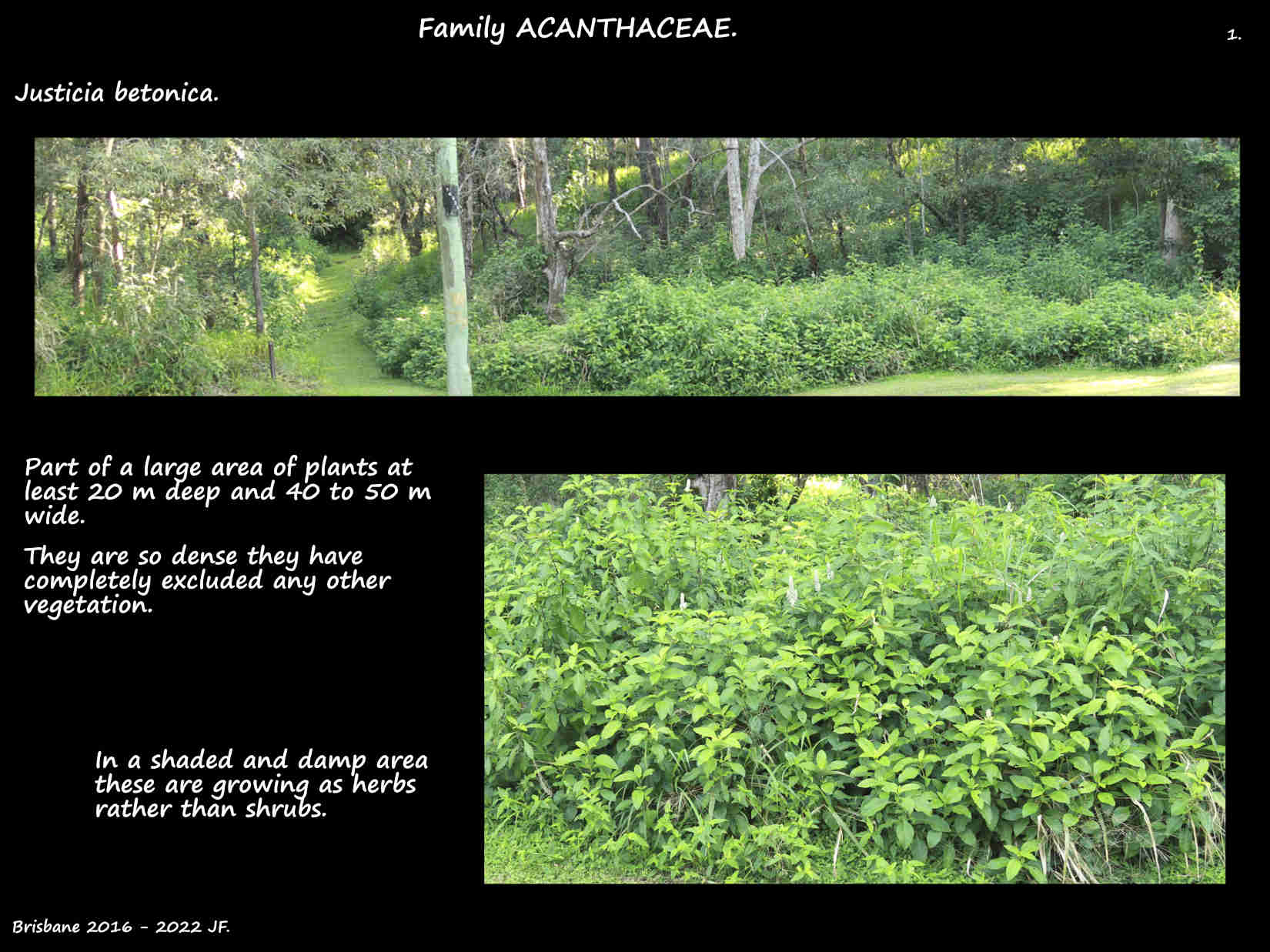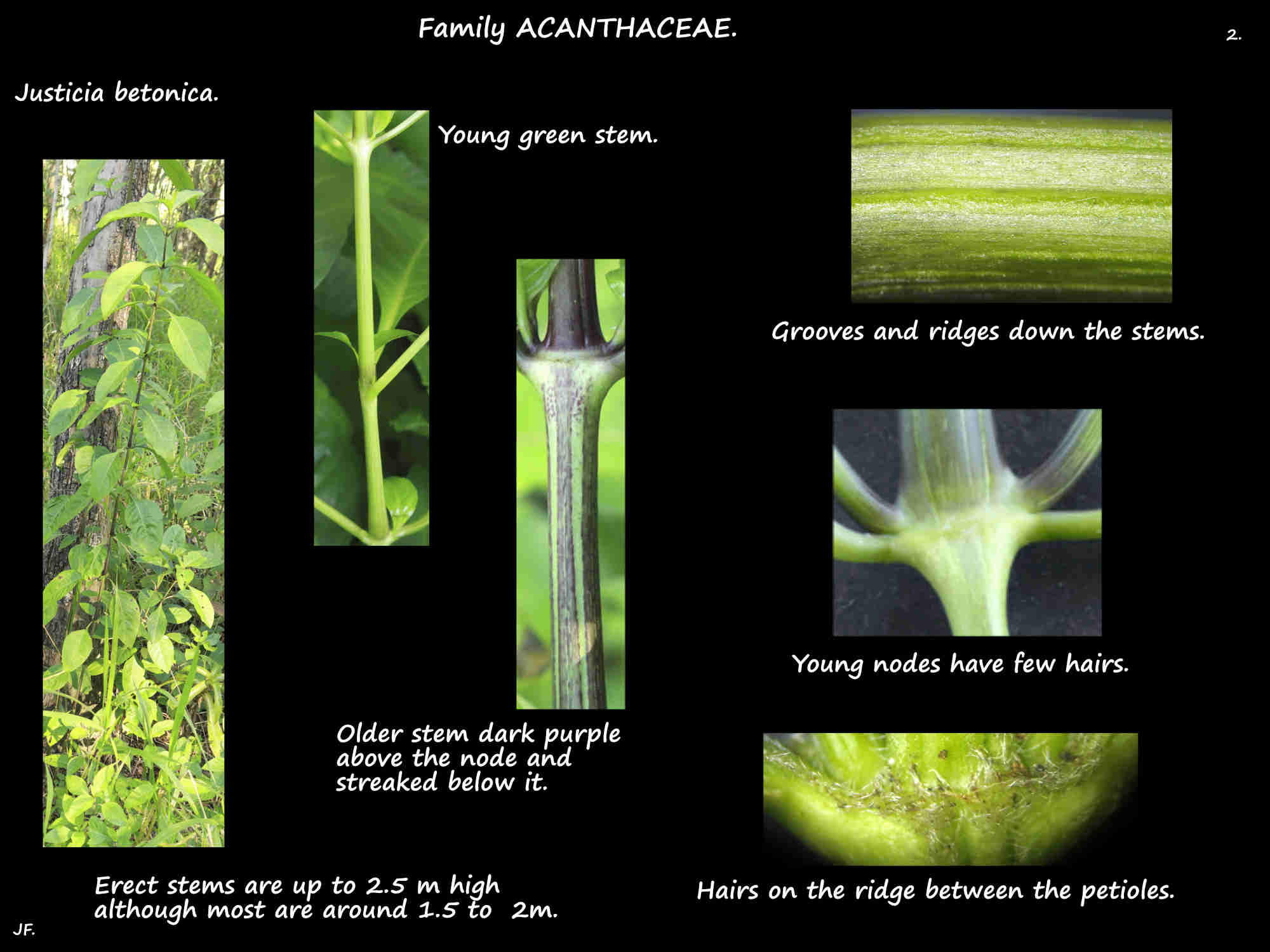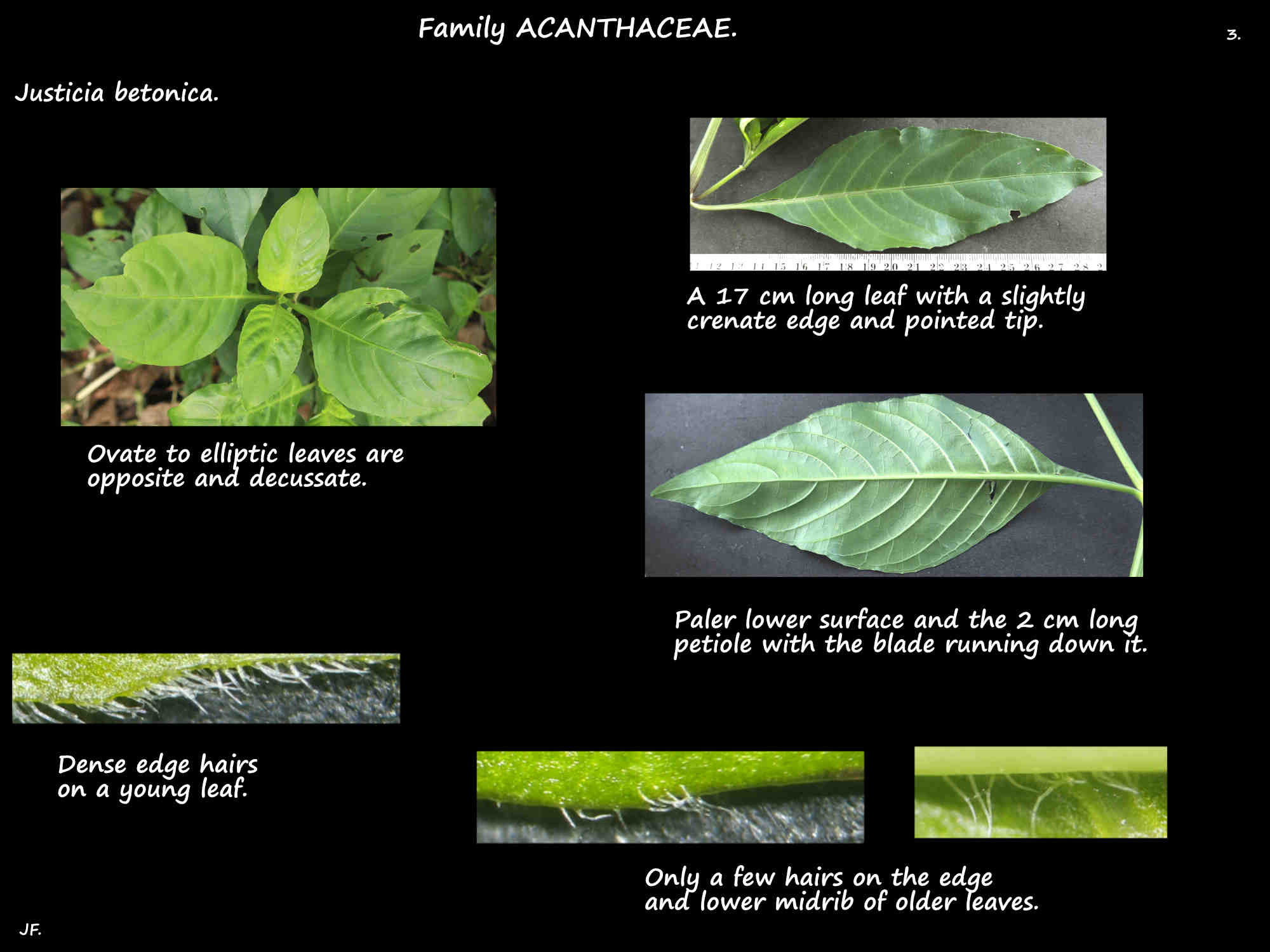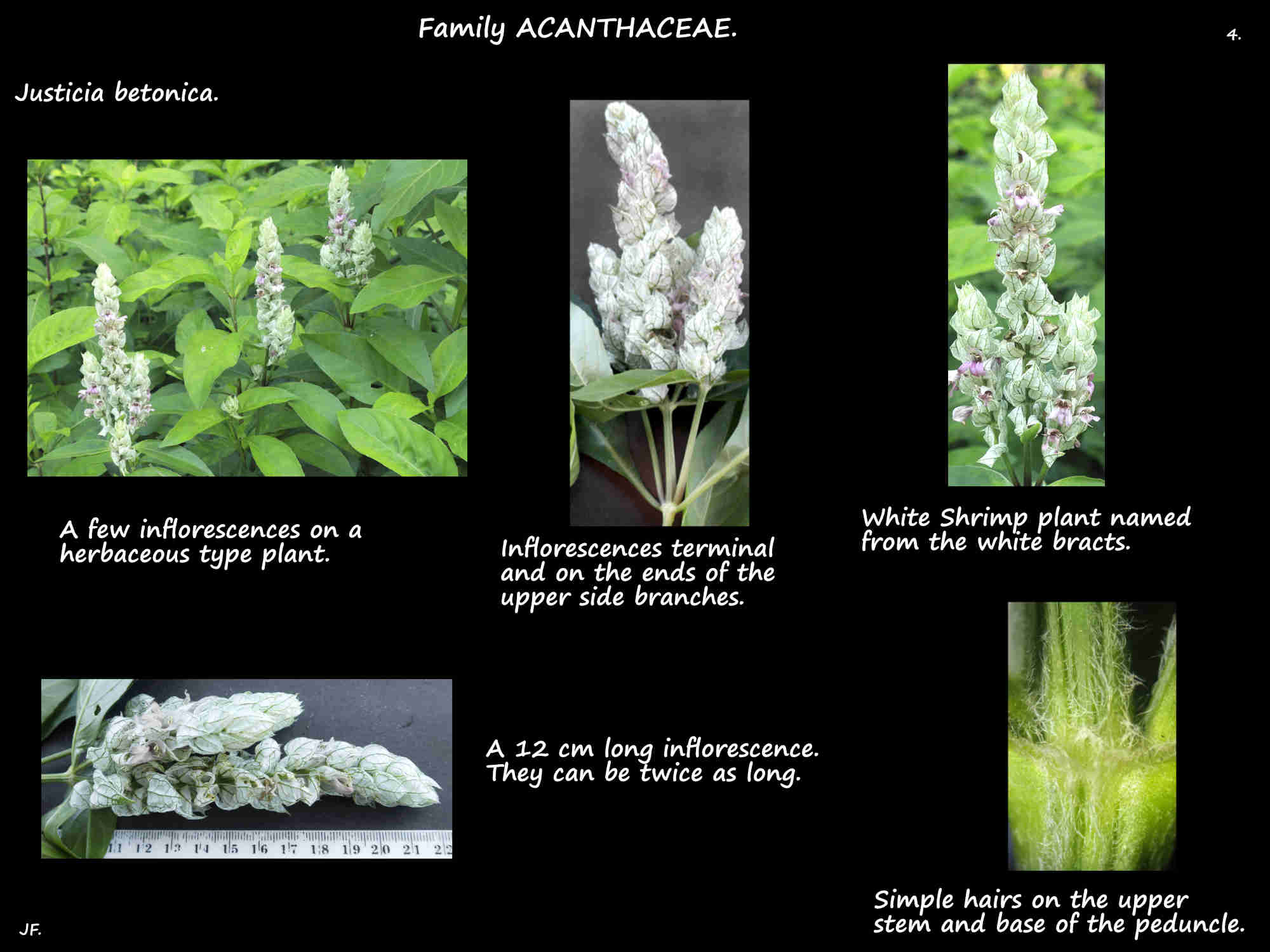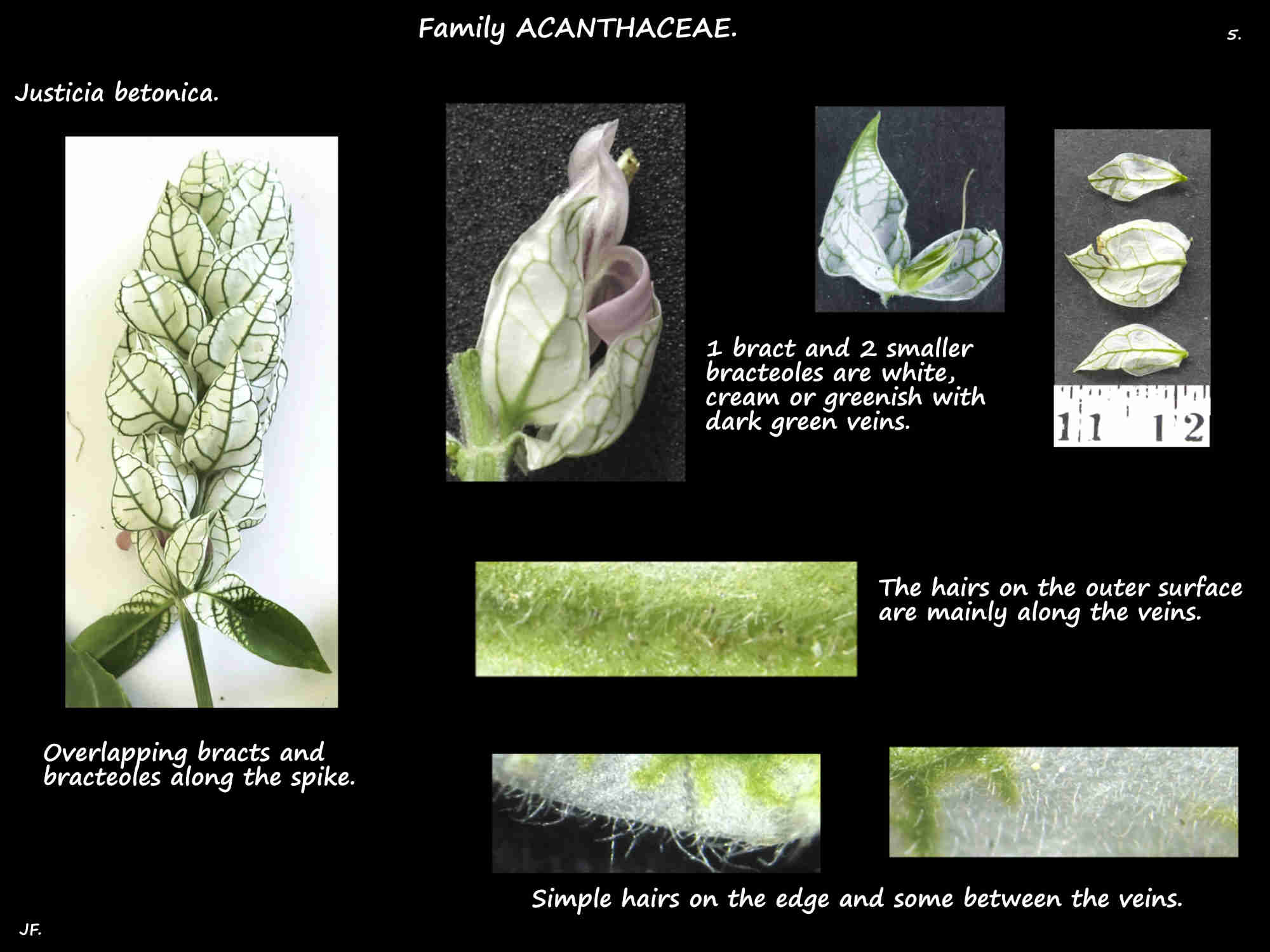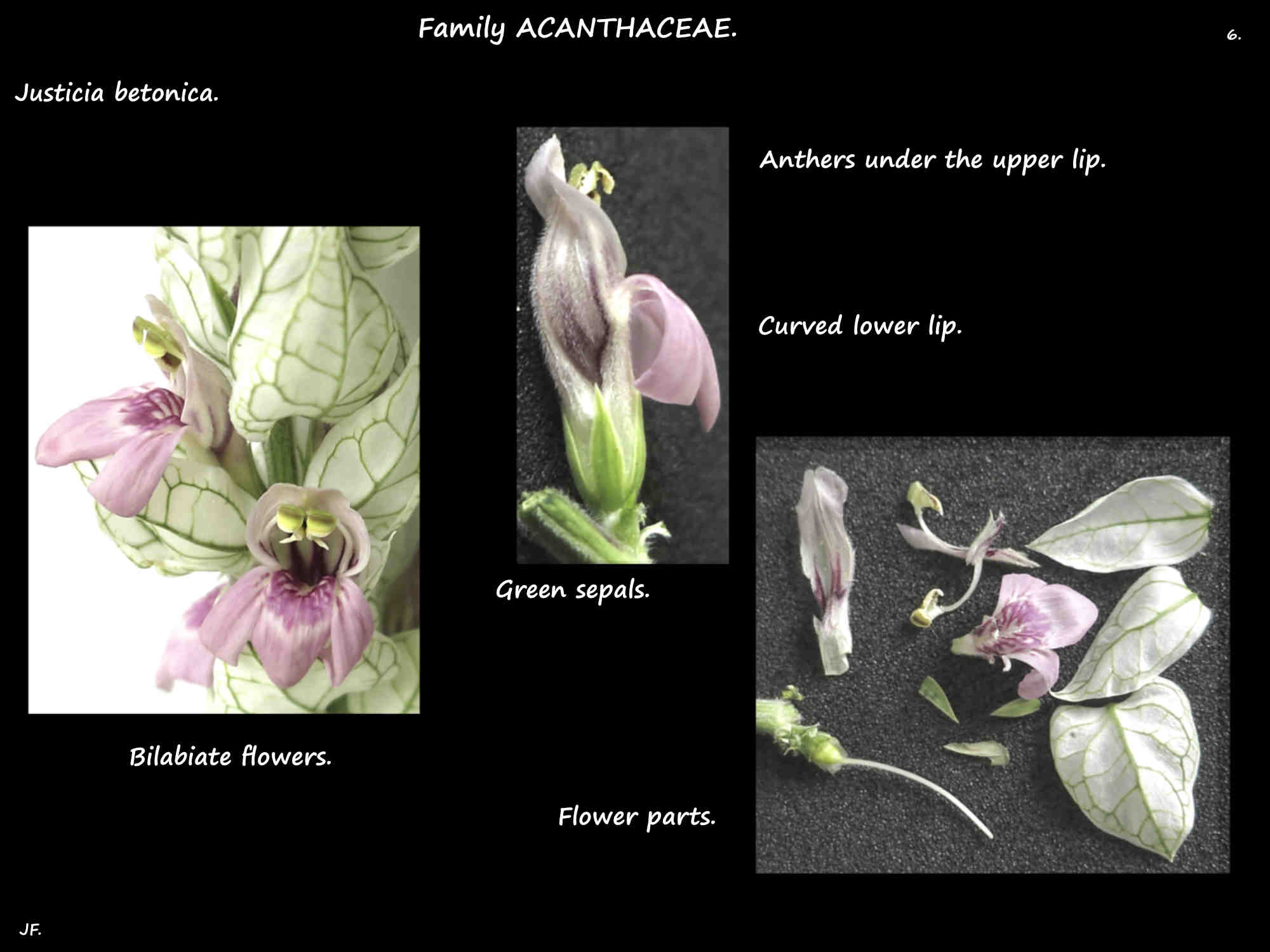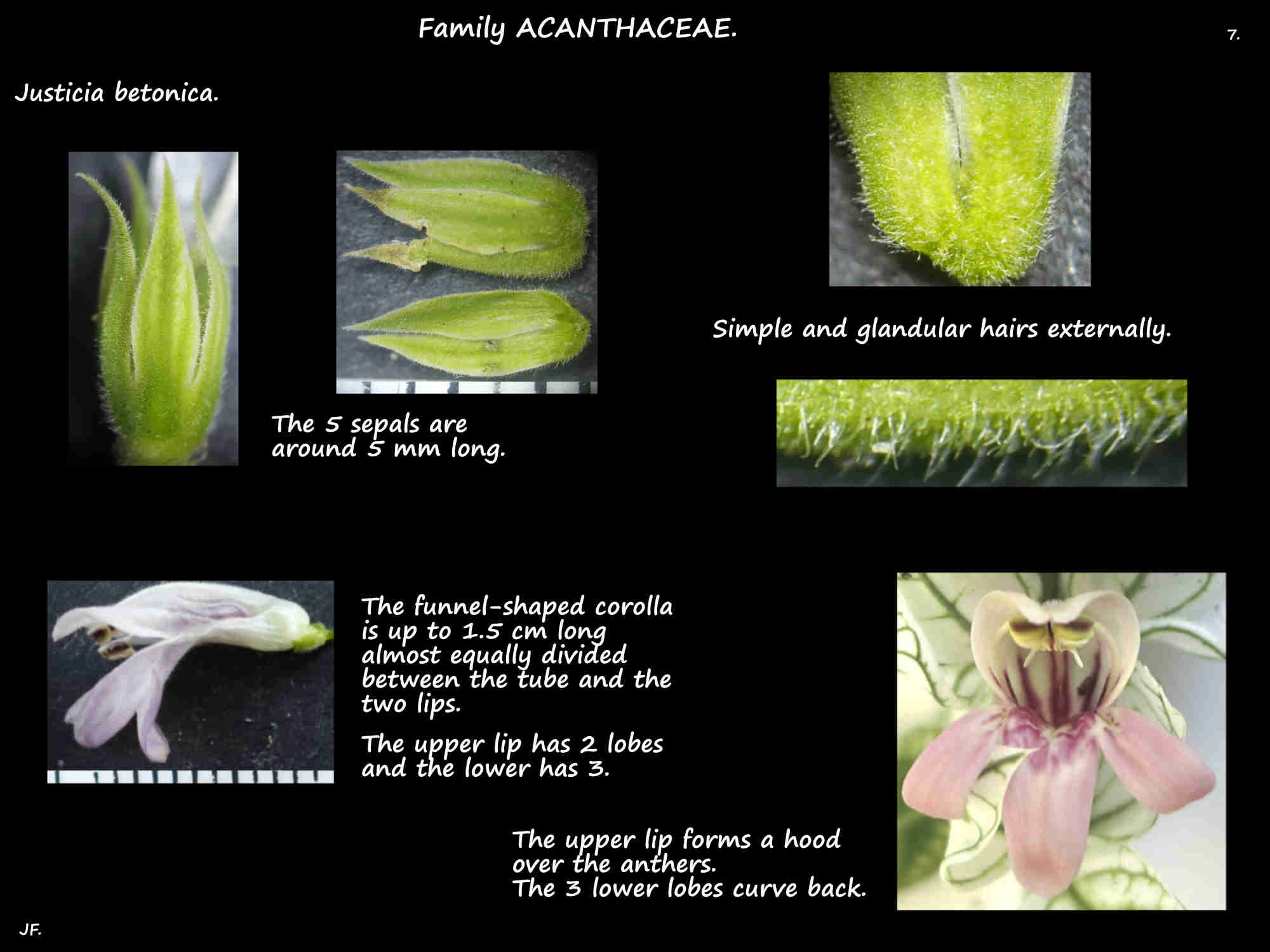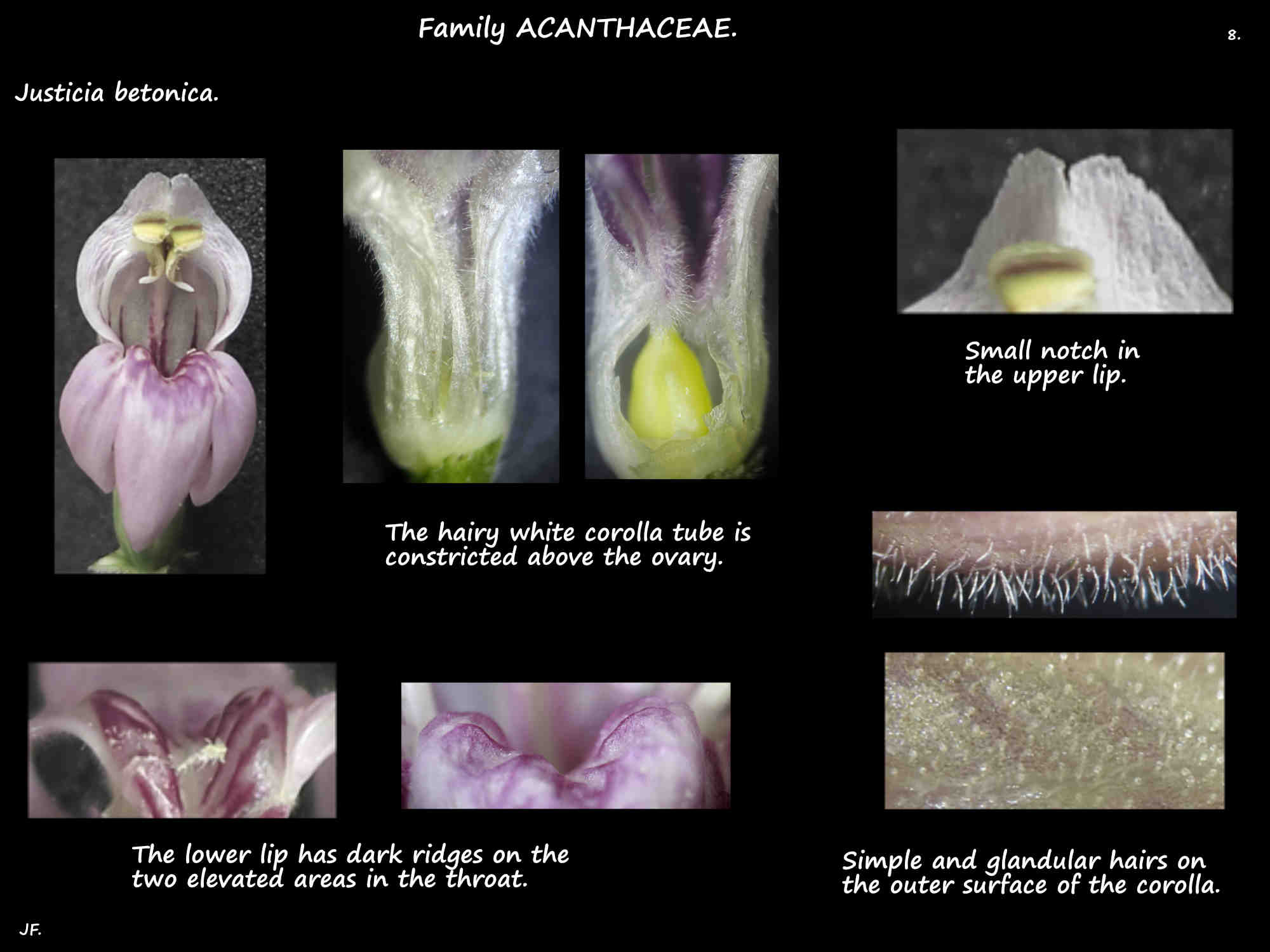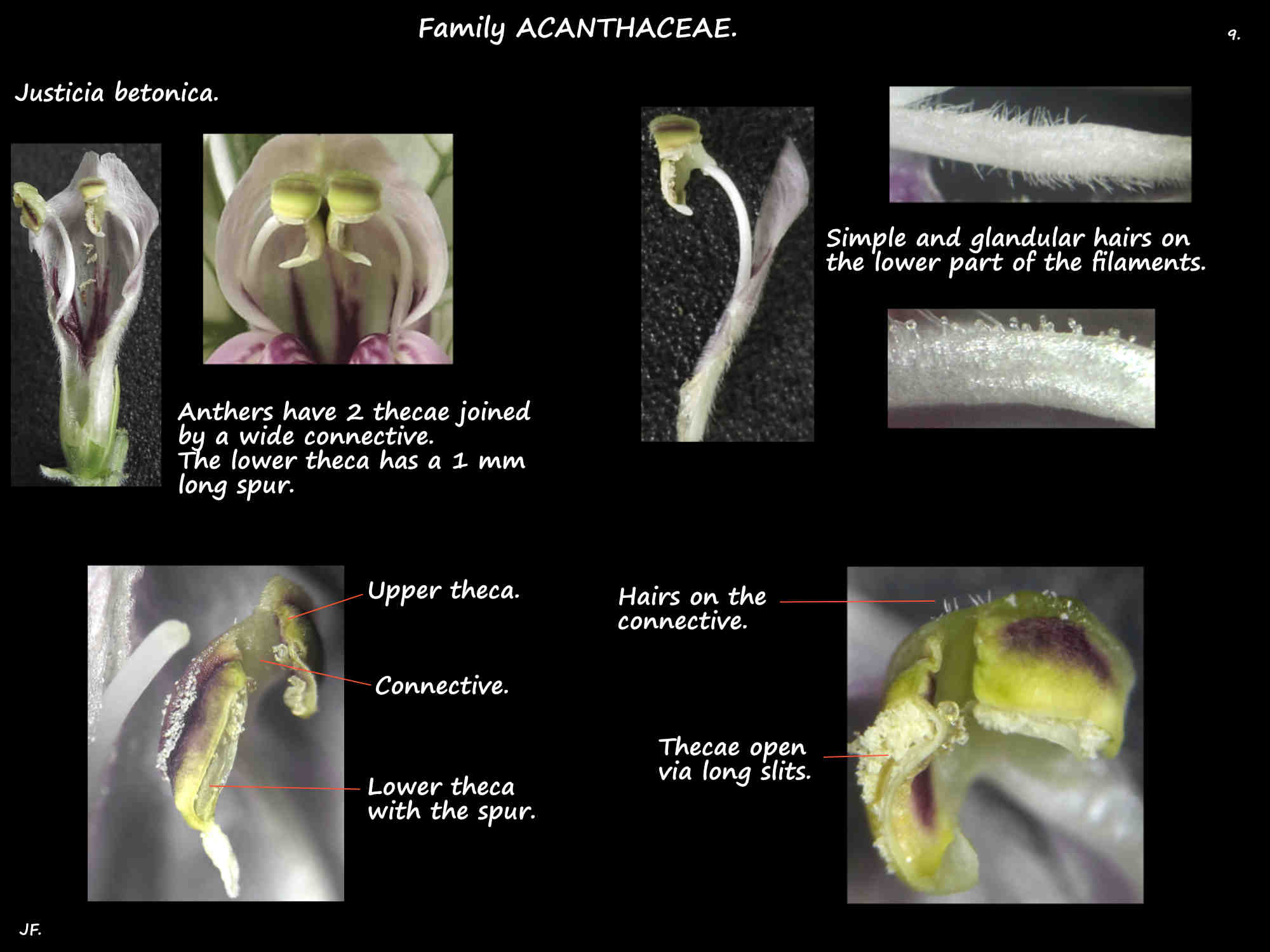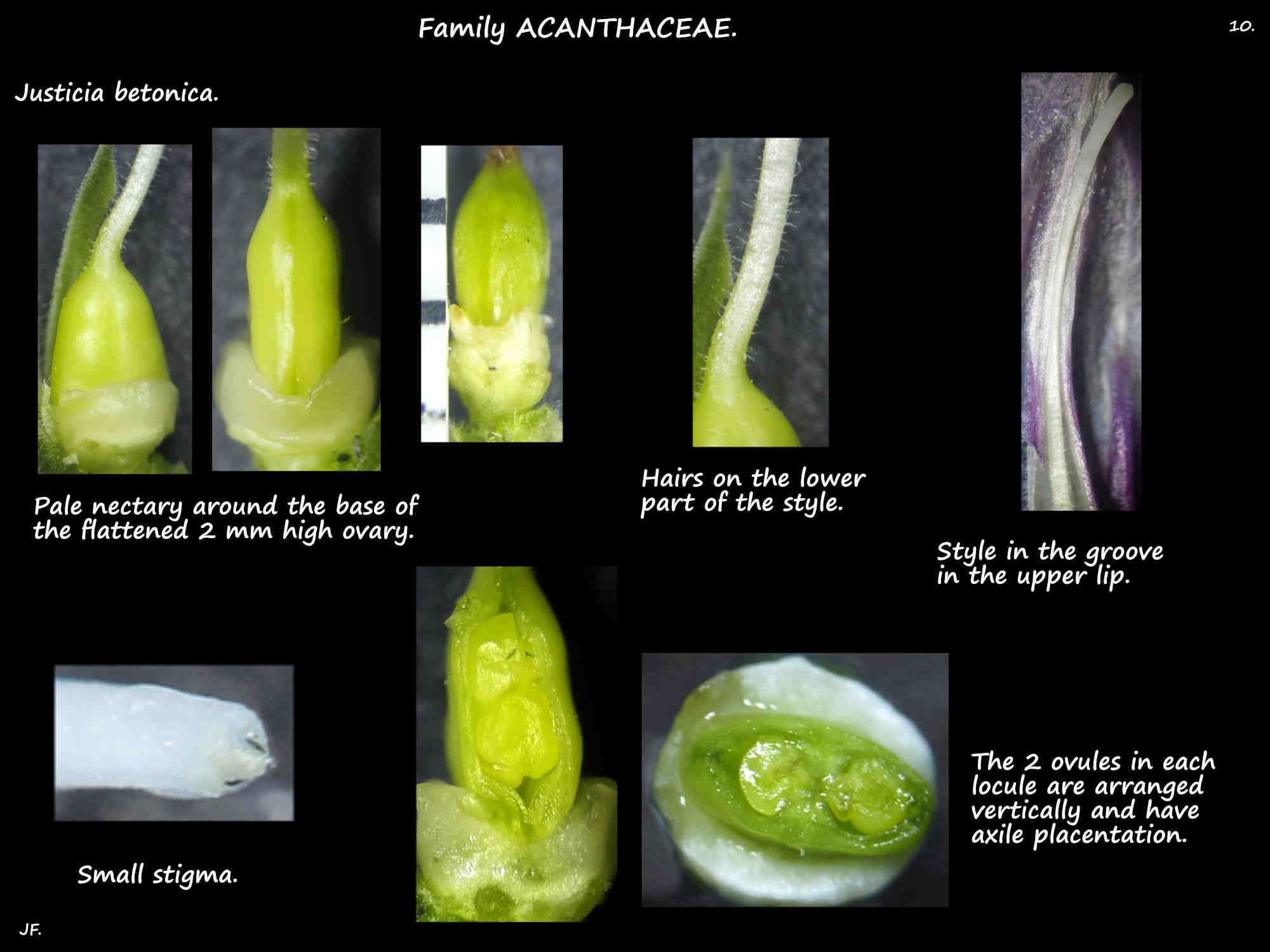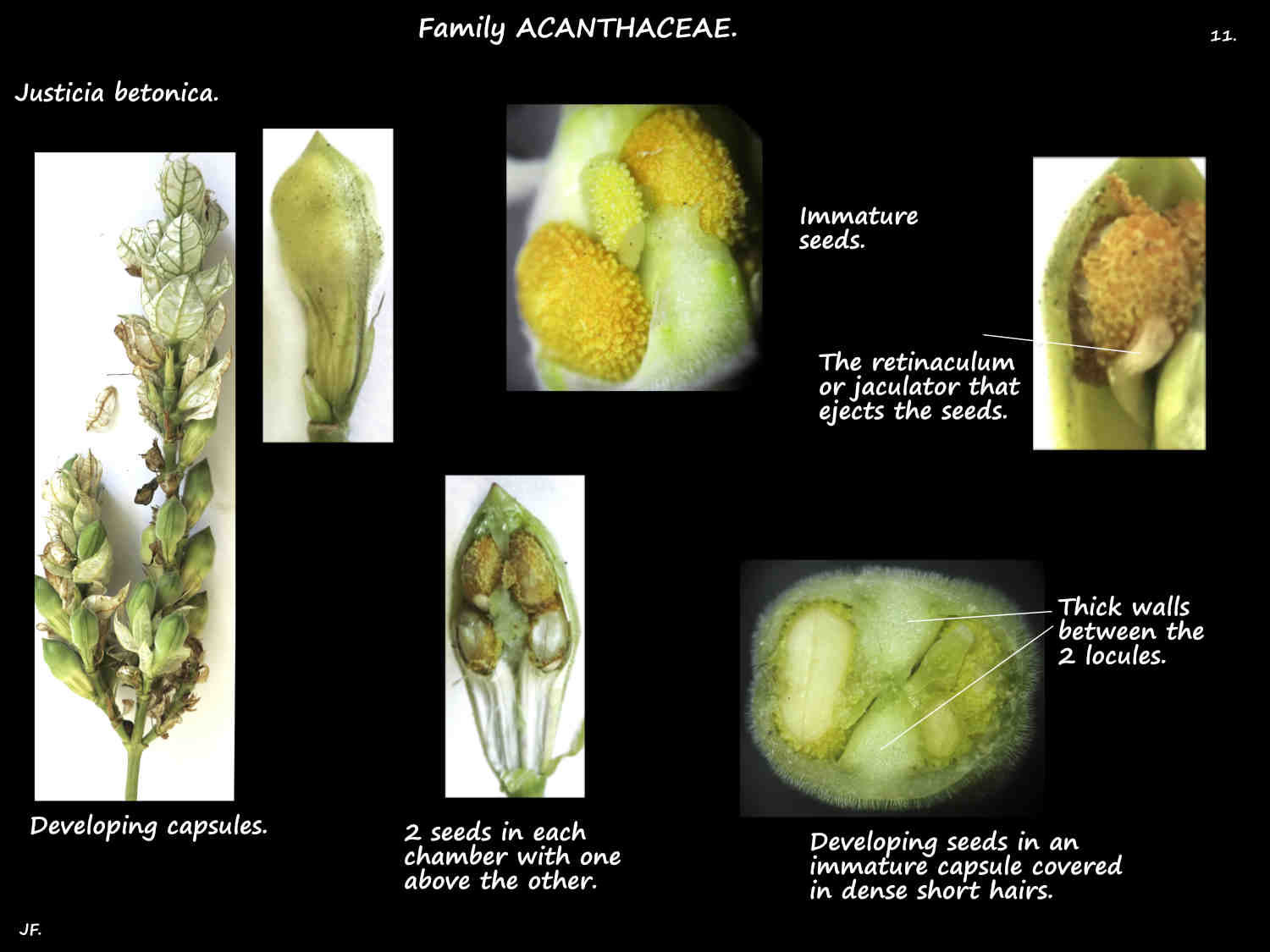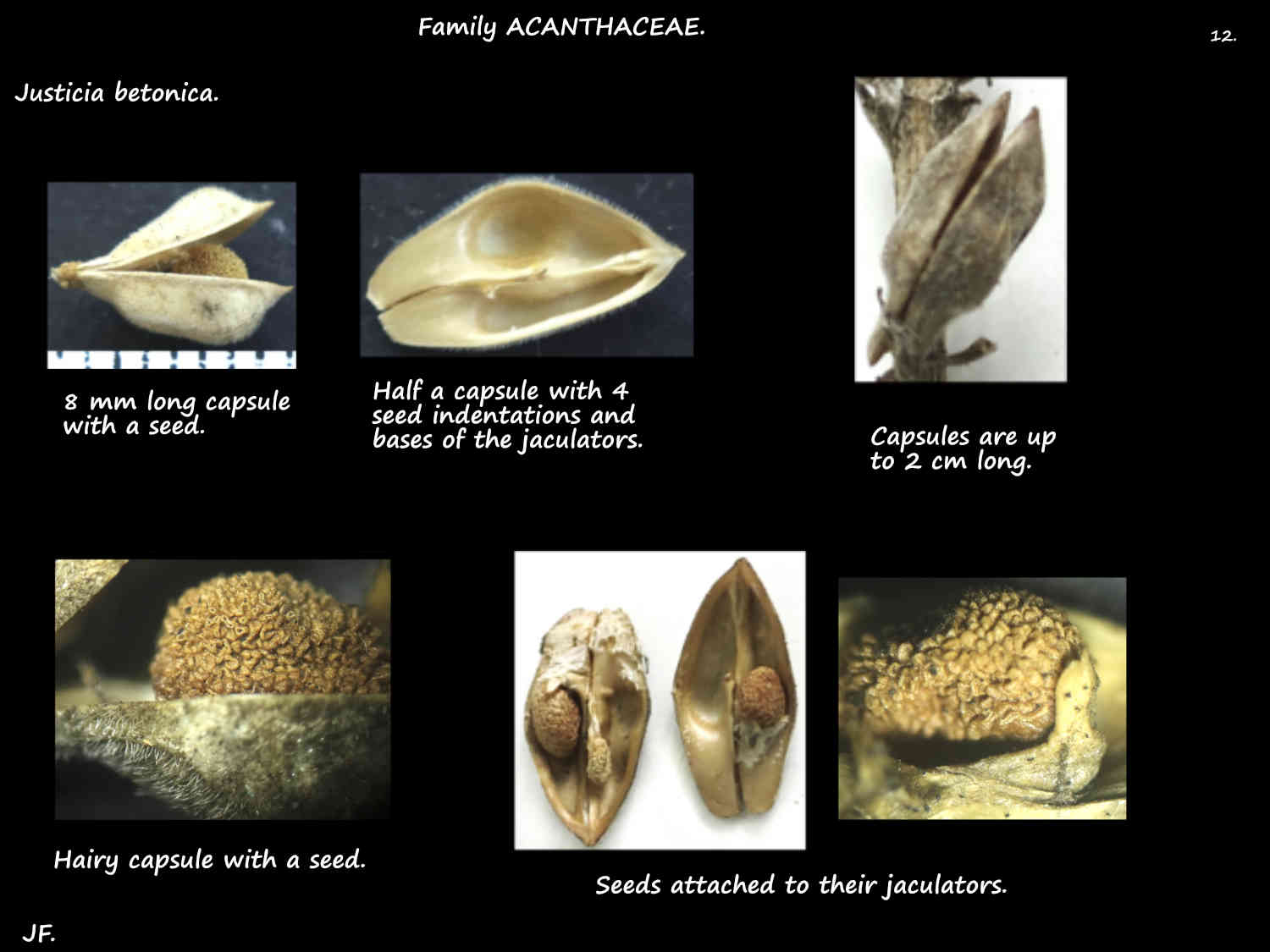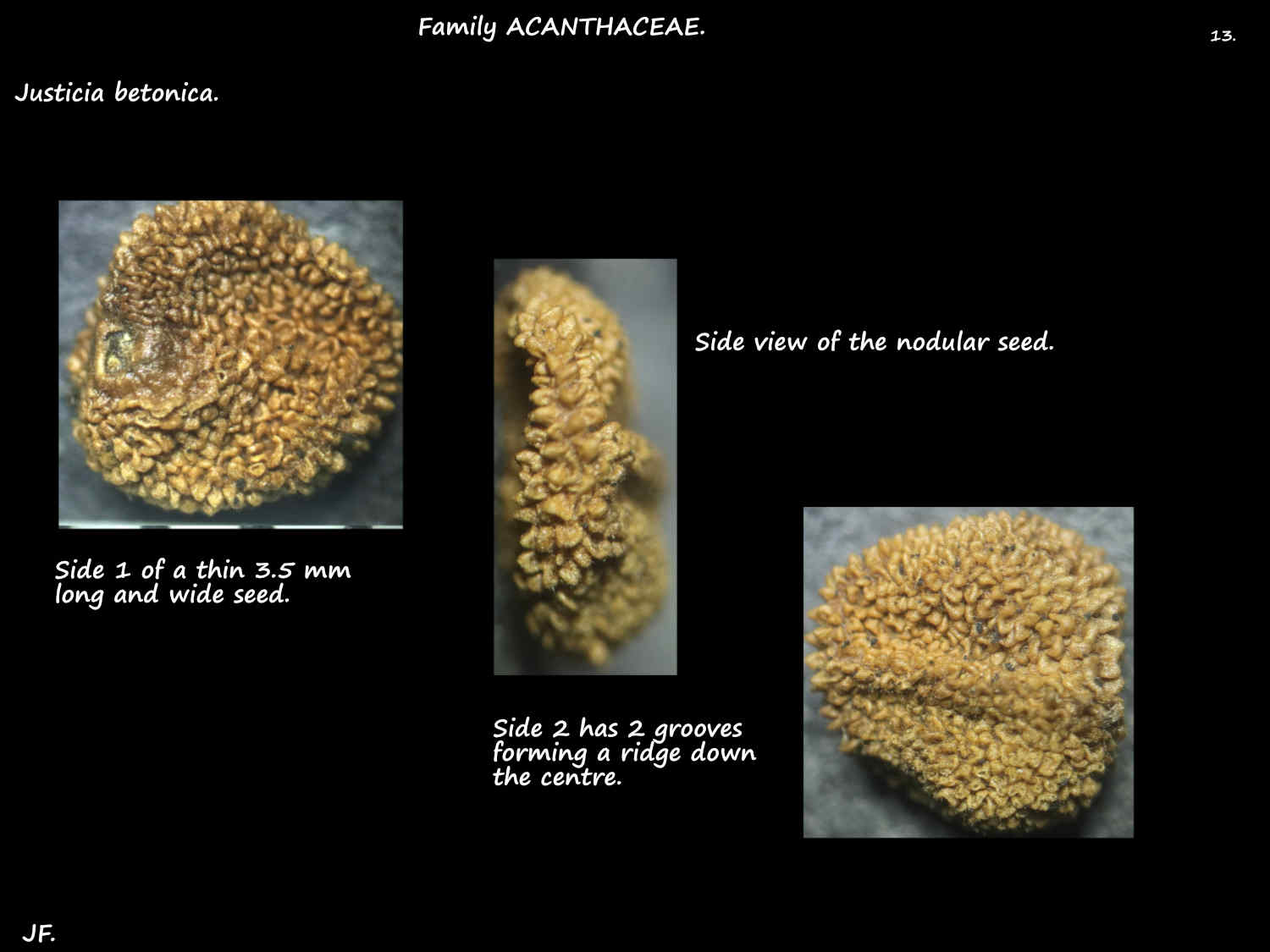Justicia betonica.
There are at least 24 synonyms including 10 as Justicia species and others under the genus names
of Adhatoda, Dicliptera, Drejerella, Ecbolium, Gendarussa and Jacobinia.
Kew recognises it as Nicoteba betonica with Justicia betonica being a synonym.
The White Shrimp Plant or Squirrel tail is a widespread naturalised plant in S. E. Queensland where it is a weed.
Flowers and fruit are present throughout the year.
They are perennial branching herbs or shrubs up to 2.5 m high.
(They are also described as subshrubs or shrubby herbs.)
Stems root at the nodes and they can rapidly form extensive clumps.
The stems are cylindrical with dense hairs across the swollen nodes.
The stems are striate with narrow grooves down them.
Young stems are green but older ones develop purple areas above the nodes.
The simple leaves, on petioles up to around 2 cm long are opposite and decussate.
They are around 17 (22) cm long and 10 (12) cm wide.
The blade is ovate to elliptic, the tip pointed and the edges smooth or with small lobes (crenate).
The base is wedge-shaped tapering to a narrow base that forms short wings on the petiole.
The upper surface is dark green with the lower slightly paler.
There may be a few hairs but typically there are none.
Inflorescences are terminal on the main stem and the short side branches in the upper axils.
They are narrow, erect rarely branched spikes up to around 15 (25) cm long.
The peduncle, around 5 to 8 cm long is also grooved like the main stem.
The upper part of the stem, peduncle and rachis (midrib) are densely covered with simple hairs.
Each flower has 1 bract and 2 smaller bracteoles at the base.
(Most frequently described as just 3 bracts.)
They are white, greenish or cream with prominent darker green veins.
They are ovate with a short pointed tip and a wedge-shaped base.
The bracts are 2 to 2.5 cm long and 1 cm wide and the bracteoles around 1.5 cm long.
Hairs may be present or absent.
The around 5 mm long calyx has 5 narrow lanceolate sepals.
These have simple and glandular hairs.
The bisexual funnel-shaped flowers are up to 1.5 cm long.
The corolla tube is up to 8 mm long and 2 to 3 mm wide.
The upper lip has 2 mostly fused lobes with just a small notch at the tip.
It is around 7 mm long and forms a hood over the anthers.
The lower lip is 5 to 6 mm long with 3 lobes.
The centre lobe is slightly larger and they all curve down.
The tube is white tinged with green or mauve and the lobes are mauve to pink.
The middle lobe of the lower lip has 2 raised areas that project upwards into the throat.
They have darker mauve ridges on them.
There are simple hairs and glandular ones on long stalks on the outer surface.
The 2 stamens insert into the corolla tube just above the constricted area.
The white filaments have simple and glandular hairs at the base.
Each stamen has 2 thecae or pollen sacs held at different levels by a wide connective.
There are simple hairs on the top of the connective.
The upper theca is around 1 mm long and the lower is slightly longer.
The lower theca has a 1 mm long appendage or spur at the base.
There is a nectary disc around the base of the ovary.
The superior ovary, of 2 fused carpels has 2 locules.
Each locule has 2 ovules vertically arranged and with axile placentation.
The long white style has hairs at the base and the stigma is small.
The fruit are capsules 1.5 to 2 cm long with a varying amount of hair.
Each of the 2 chambers has 1 or 2 roughly spherical seeds.
The brown seeds, around 6 mm long have a wrinkled or nodular surface.
They have a jaculator or retinaculum to forcibly eject them.
J.F.

